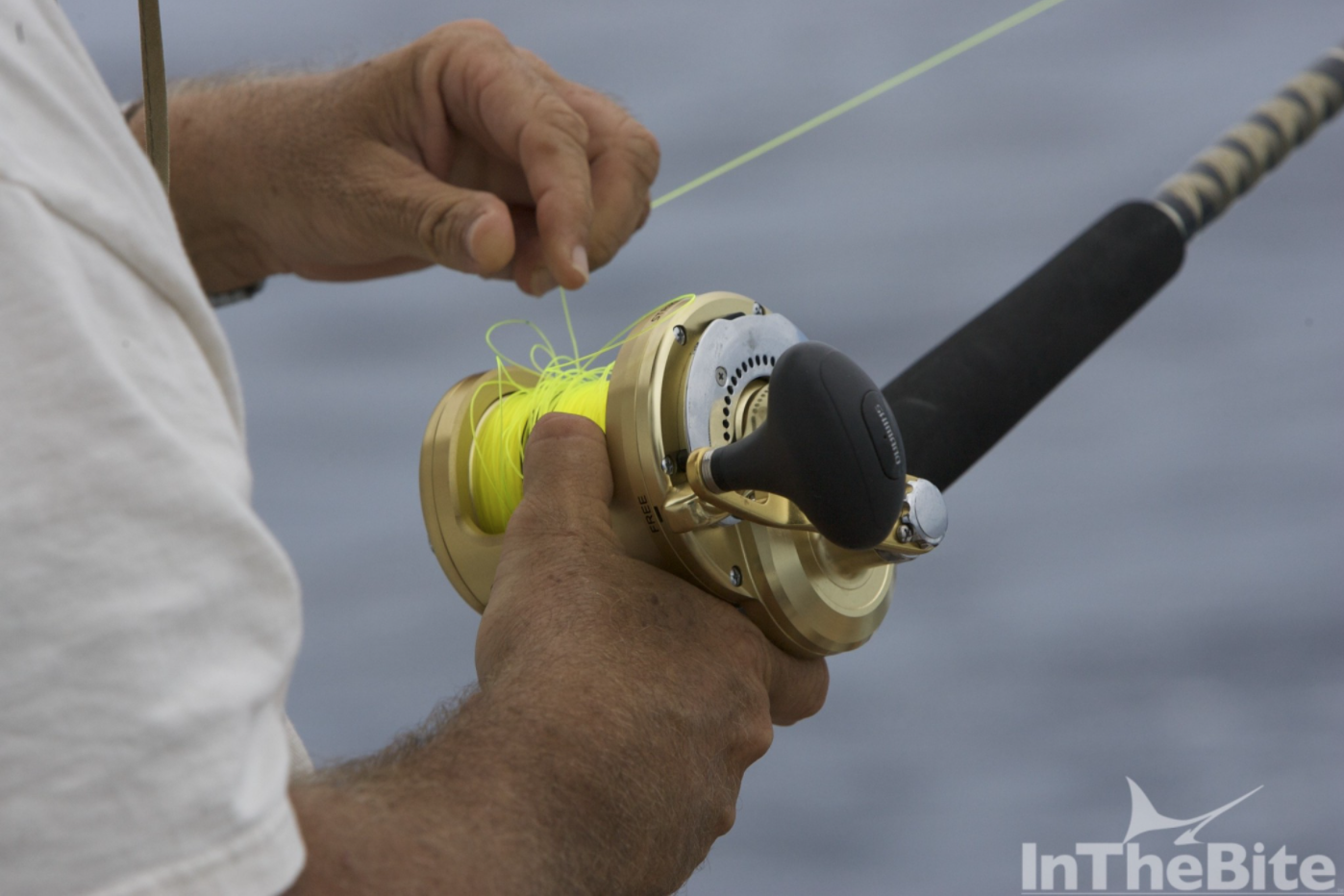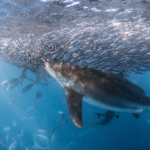Article Courtesy: inthebite.com | Originally Published: 5/11/2021 | Click here for original article
Conquering The Backlash
Chasing billfish with light tackle, circle hooks and dead bait is a tactic that has gained in popularity worldwide. It’s a great way to keep the anglers involved in catching fish rather than just waiting for a blind strike, not to mention that pitch-baiting a lit-up marlin or sailfish off the teaser is just about the coolest thing you can do.
Unfortunately, with new anglers there’s also a corresponding rise in burnt thumbs and bird’s nests—we’re talking about the dreaded backlash. Here are a few tips on what to do once you’ve had one and, even better, a few thoughts on how to keep them from happening in the first place.
Just about everyone that’s used a conventional trolling reel has had a “professional overrun.” If you’ve never had a backlash you, A) have not been fishing very long; B) are not to be trusted very far; or C) are a lure fisherman. Most backlashes happen when a fish sneaks up and beats you to the rod, thumping the bait with authority before swimming off at top speed.
You grab the rod and try to go to freespool, clamping down with your thumb in the process, but it’s too late—the rubber band action of the stretching mono has already started, the spool speeds up faster than you wanted and friiiizzzz….a monster bird’s nest magically appears and the line snaps like a rifle shot. The captain looks down from the bridge with a frown and the mate reaches for the rod, not looking forward to the next five minutes that he’ll have to spend untangling your God-awful mess.
Meanwhile, you go searching for the coldest beer in the icebox, not only to wallow in shame and calm your frazzled nerves but also to slow the swelling of the dime-sized blister that’s already forming on the pad of your thumb. Damn that hurts.
Prevention
So now what? The first step is to keep it from happening at all. And this does NOT mean using the clicker, which just about everybody agrees is a bad idea (that’s far from a scientific statement but I honestly don’t think you could find anyone fishing competitively in dead-bait trolling tournaments that advocates using the clicker). Capt. Bubba Carter has spent a lot of his time teaching anglers the art of the freespool dropback from the bridge of the Tijereta, his 43-foot Island Boatworks charter boat that’s based out of Los Sueños, Costa Rica. He says that you need to beat the fish to the bait.
“Being ready and in freespool before the fish bites makes all the difference in the world,” he instructs. “You have to be ahead of the bite. If the rod’s already bending over then just push up the drag and hope for the best because you’re already too late.” Going back to freespool at this point in the bite sequence has disastrous consequences so just roll the dice and hope you get lucky.
Josh Ruskey is another captain who has spent a lot of time working with his guys, many of whom are experienced East Coast fishermen escaping the cold winters of Ocean City and hoping to get a few shots at billfish down in Costa Rica. He has a similar philosophy about being set before the fish bites, to the point where his anglers either hold the line or the rod while they’re in the cockpit. “Even if we’re fun fishing and a guy has a backlash, he’ll say, ‘What could I have done to stop that?’ I’ll tell him, ‘Well, if you had the rod in your hand, chances are you would’ve ready for the bite and it wouldn’t have happened.’ Usually after that, everyone’s holding their rod for the rest of the day.”
Having good eyes in the cockpit, on the bridge and/or in the tower also helps tremendously. A good mate can see the fish coming and shout a warning to the correct angler to be ready for the bite, which again will improve the hook-up ratio quite a bit. Nobody likes being surprised by the bite, least of all the angler who’s had his thumb on the reel for four hours without a bite.
Most every captain I spoke to about this prefer to run their lines straight through Black’s clips on the riggers. This allows their anglers to freespool back to a fish through the clip without having to wait for the fish to pop the line free. It requires constant attention, either holding the rod or the line, but if you’re serious about catching every single bite then that’s what it takes.
Another thing is to ensure you have good freespool on all the reels in your inventory. At any rate, double check everything to make sure that freespool is truly free.
Backlash: Now What?
So let’s say you finally do get bit and even though the fish surprises you a little, you’re still able to get off a fairly decent dropback. The line’s not coming off in a straight line toward the fish but is dropping freely off the rod tip into the water the way it’s supposed to. You count to five and get ready to ease up the drag lever and come tight. But right at the end you have a little frizz just as you’re ready to lock it up.
What now?
You’ve got two choices: either stay in freespool for another second or two and hope all the loose line comes off the reel or go to plan B. If you’re backlashed on the dropback and don’t think it will come out, the best advice from the experts is to go ahead and push up the drag lever. Wind like crazy to get a few cranks on the reel and loudly and clearly announce “Backlash!” (Don’t forget that your captain probably can’t see the reel spool and won’t know there’s a problem unless you say something right now, and loud enough for him to hear you).
The captain will stop the boat and should go into reverse as fast as possible so the angler can continue to wind on some line over the loose loops on the reel. Don’t worry about the backlash at this point, just keep winding right over that sucker like a bad memory. If the fish doesn’t make a strong run, you might be able to salvage a bad situation and earn a release the hard way. Tucker Colquhoun reports that the tactic will even work on marlin, with a little luck. “We backlashed a small blue last year but stayed hooked up. I got my dredges in and started backing down right through the spread but we managed to keep him close and caught him.”
If you fish much with dead bait, you’re going to have to drop back and if you’re dropping back then you are going to have a backlash from time to time. It comes with the territory. Don’t feel too bad: backlashes happen to the best anglers in the world too, just not as often as to the rest of us. With a little practice and a good feel for the tackle, you’ll be surprised how many times you can get through a seemingly disastrous situation and still manage to get the release.
The keys to reducing your professional overruns are simple enough: Always be ready for a bite. Watch the baits. Listen to your captain and crew when they give you advice. And then practice. No one’s born knowing how to do this, so spend as much time as you can in places like Isla Mujeres, Costa Rica and Guatemala where you can really work on improving your skills as an angler.
Angler Training
Being an exceptional captain is more than just doing a good job maintaining and running the boat or finding fish. You also have to be a good teacher and coach, especially when it comes to new anglers. This will pay big dividends and will result in fewer backlashes (and less frustration). But like anything else worth doing, being a good instructor takes practice.
“Teaching a new angler about freespool can be a touchy subject,” says 2012 Captain of the Year Rob Moore. “If he’s thumbing it and you tell him to take his thumb off and he starts backlashing, things get frustrating for both of you.” Moore recommends having new anglers try to hook anything that comes into the spread, with dolphin being an especially promising target. “Dolphin fishing is a great way to give the new guy some confidence,” he says. “They usually don’t go away until you hook them. They will also help your angler see the fish in the spread and also to anticipate where the fish will go and what it will do next. Most backlashes are because you’re either too late to the rod or you’re playing tug ‘o war with the fish and finally decide to let him have it but dolphin fishing can help with both.”
He also suggests having lots of rods rigged up and ready to go, and a couple patient mates standing by to help.






